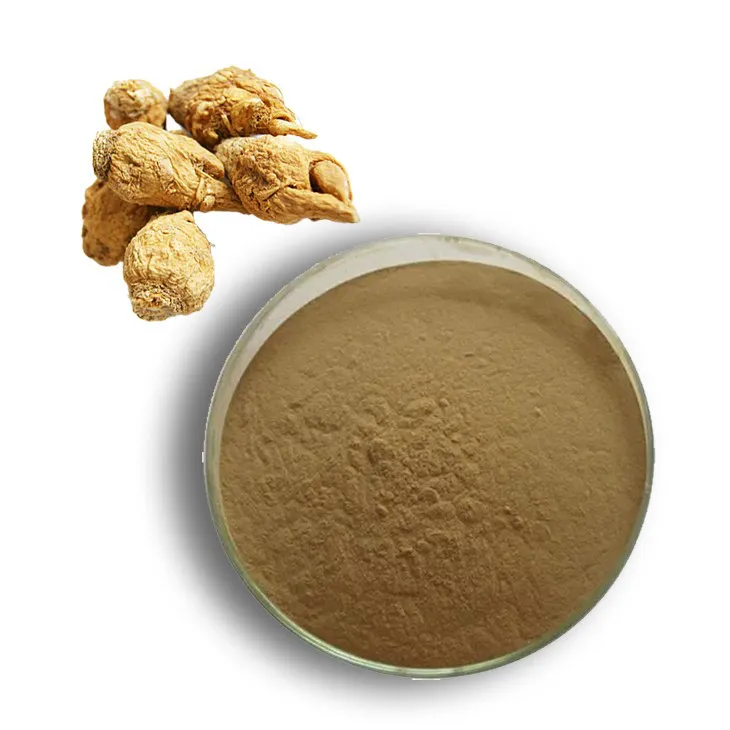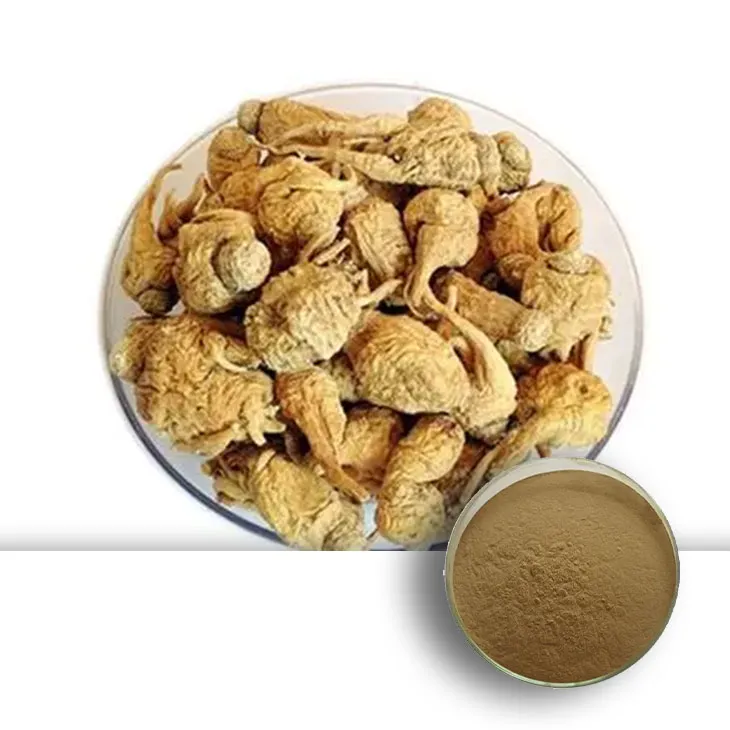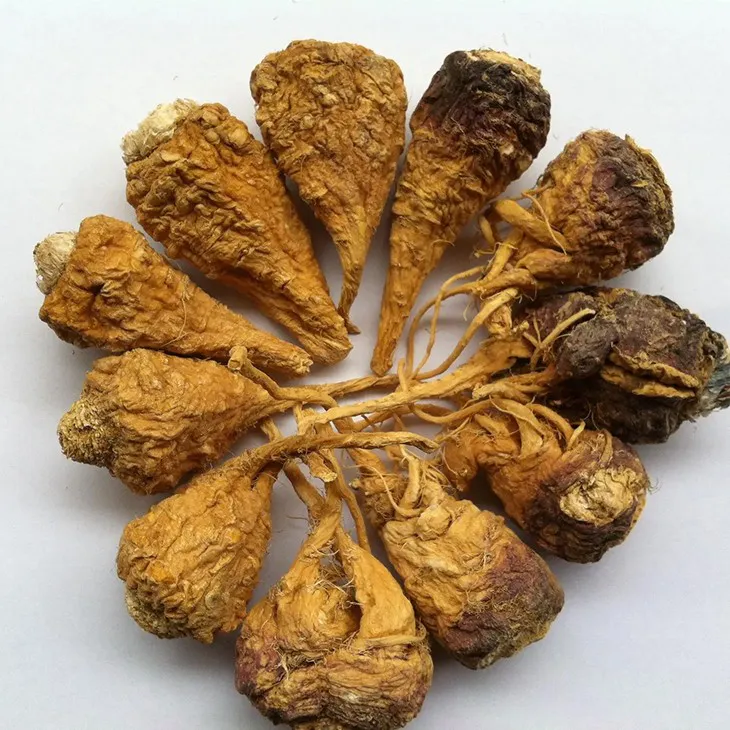- 0086-571-85302990
- sales@greenskybio.com
The Taste of Ripe Maca and Natural Maca Extract.
2024-11-13

1. Introduction to Maca
Maca, a plant native to the high altitudes of the Andes Mountains in Peru, has been used for centuries in traditional medicine. It is a cruciferous vegetable, related to broccoli, cauliflower, and kale. Maca has gained significant popularity in recent years in the global health and nutrition market due to its potential health benefits.

2. The Taste of Ripe Maca
Ripe maca has a unique flavor profile that is influenced by various factors such as its growth environment, soil composition, and altitude. Generally, it has a nutty and earthy flavor with a slightly sweet undertone. Some people also detect a hint of bitterness in the taste of ripe maca.
2.1. Factors Affecting the Taste
The soil in which maca is grown can impart different flavors. For example, if the soil is rich in certain minerals, it may enhance the nuttiness of the maca. Altitude also plays a role. Maca grown at higher altitudes may have a more intense flavor compared to those grown at lower elevations. The climate conditions, including temperature and rainfall, during the growth period can also affect the taste development.

3. Natural Maca Extract
Natural Maca Extract is a concentrated form of maca. It is produced through various extraction methods that aim to preserve the beneficial compounds present in the maca plant. The extraction process typically involves using solvents such as water or ethanol to isolate the active ingredients.
3.1. Production Process
First, the maca roots are harvested and cleaned thoroughly. Then, they are ground into a fine powder. Depending on the type of extract desired, different solvents are added. For a water - based extract, water is added to the powdered maca and the mixture is heated and stirred for a specific period. This allows the water - soluble compounds to dissolve. In the case of an ethanol - based extract, ethanol is used in a similar manner. After the extraction, the solvent is removed, leaving behind a concentrated extract.

4. Differences between Ripe Maca and Natural Maca Extract
4.1. Taste
The taste of natural maca extract is different from that of ripe maca. Since it is a concentrated form, the flavor is often more intense. The extraction process may also alter the taste slightly. Some natural maca extracts may have a stronger earthy or bitter taste compared to ripe maca. This is because the extraction may concentrate certain flavor - imparting compounds.
4.2. Nutrient Concentration
Natural maca extract has a higher concentration of certain nutrients compared to ripe maca. For example, the levels of macamides and macaenes, which are some of the bioactive compounds in maca, are much higher in the extract. This is because the extraction process isolates and concentrates these specific components.
4.3. Form and Usage
Ripe maca is usually consumed in its whole or powdered form. It can be added to smoothies, baked goods, or used as a supplement in its powdered state. On the other hand, natural maca extract is often sold in the form of capsules, tinctures, or concentrated powders. The extract is more commonly used for targeted health benefits due to its higher concentration of active ingredients.
5. Similarities between Ripe Maca and Natural Maca Extract
5.1. Health - Promoting Properties
Both ripe maca and natural maca extract are believed to have several health - promoting properties. They are both rich in vitamins, minerals, and antioxidants. Some of the potential health benefits associated with maca include increased energy, improved libido, and enhanced hormonal balance. These benefits are thought to be due to the presence of various bioactive compounds in maca, regardless of whether it is in its ripe form or as an extract.
5.2. Origin
Both come from the maca plant. Whether it is the whole, ripe maca or the extract made from it, the source is the same. This means that they share a common genetic and chemical foundation, which is why they have some overlapping properties.
6. Potential Applications in Modern Medicine
- Energy Boost: Maca, both in its ripe form and as an extract, has been studied for its potential to increase energy levels. In modern medicine, this could be beneficial for patients with chronic fatigue syndrome or those recovering from illness or surgery.
- Hormonal Regulation: There is evidence to suggest that maca can help regulate hormones. This could have applications in treating hormonal imbalances such as those related to menopause in women or low testosterone levels in men.
- Antioxidant Activity: The antioxidants present in maca may help protect cells from oxidative damage. This could play a role in preventing certain diseases such as cancer and heart disease.
7. Role in Traditional Remedies
In traditional Andean medicine, maca has been used for a variety of purposes. It was often given to enhance fertility in both men and women. Additionally, it was used to improve strength and endurance. The traditional use of maca was based on the overall well - being it seemed to impart to those who consumed it. Whether it was the whole plant or preparations made from it, maca held an important place in the traditional medical practices of the region.
8. In the Natural Products Market
- Supplements: Maca products, including both ripe maca and natural maca extract, are popular in the supplement market. They are often marketed as natural energy boosters, libido enhancers, and general health - promoting supplements.
- Functional Foods: Ripe maca can be incorporated into functional foods such as energy bars and health - conscious baked goods. The addition of maca gives these products an added health - related selling point.
- Skincare: Some natural maca extract is being used in skincare products. The antioxidants in maca may help protect the skin from environmental damage and aging, making it an attractive ingredient for beauty products.
9. Conclusion
In conclusion, both ripe maca and natural maca extract have their own unique characteristics. While they differ in taste, nutrient concentration, and form, they share similarities in terms of their origin and potential health - promoting properties. Their applications in modern medicine, traditional remedies, and the natural products market are diverse and growing. As research on maca continues, it is likely that more uses and benefits will be discovered for both the ripe maca and its natural extract.
FAQ:
What is the main difference in taste between ripe Maca and natural Maca extract?
The taste of ripe Maca is a complex result of its natural growth and environmental influence. It typically has an earthy, nutty, and slightly bitter taste. Natural Maca extract, being a concentrated form, may have a more intense flavor. The extraction process can sometimes intensify the bitterness while also bringing out the more pungent and characteristic flavors of Maca in a more concentrated way.
How are the beneficial elements in ripe Maca and natural Maca extract?
Ripe Maca contains various beneficial elements such as vitamins, minerals, amino acids, and macamides. These contribute to its potential health - promoting properties like increased energy and improved hormonal balance. Natural Maca extract aims to preserve these elements in a concentrated form. Through extraction, the goal is to retain as much of the valuable nutrients as possible, so it can potentially offer a more potent dose of these beneficial substances compared to consuming ripe Maca in its raw form.
What are the potential applications of ripe Maca in traditional remedies?
In traditional remedies, ripe Maca has been used for various purposes. It has been known to enhance fertility, improve libido, and boost overall energy levels. In some traditional medicine systems, it is used to help the body adapt to stress, acting as an adaptogen. It has also been used to address hormonal imbalances in both men and women, for example, in cases related to menstrual irregularities in women or testosterone - related issues in men.
Can natural Maca extract be used in modern medicine?
There is growing interest in natural Maca extract in modern medicine. Some research suggests that it may have potential applications in areas such as hormonal regulation. For example, it could potentially be used in the treatment of conditions related to hormonal imbalance like hypothyroidism. However, more research is needed to fully understand its mechanisms of action and to determine its safety and efficacy for medical use. Currently, it is also being explored for its antioxidant properties and its potential role in improving cognitive function.
How is natural Maca extract produced?
Natural Maca extract is typically produced through a process that involves harvesting ripe Maca roots. These roots are then washed and dried. After that, various extraction methods can be used, such as solvent extraction or supercritical fluid extraction. Solvent extraction uses solvents like ethanol to extract the active compounds from the Maca roots. Supercritical fluid extraction, often using carbon dioxide, is a more advanced method that can produce a cleaner and more pure extract while preserving the beneficial components of Maca.
Related literature
- The Nutritional and Medicinal Properties of Maca (Lepidium meyenii): A Review"
- "Maca Extract: A Comprehensive Analysis of Its Chemical Composition and Biological Activities"
- "Ripe Maca in Traditional Medicine: An Overview of Its Use and Significance"
- ▶ Hesperidin
- ▶ citrus bioflavonoids
- ▶ plant extract
- ▶ lycopene
- ▶ Diosmin
- ▶ Grape seed extract
- ▶ Sea buckthorn Juice Powder
- ▶ Beetroot powder
- ▶ Hops Extract
- ▶ Artichoke Extract
- ▶ Reishi mushroom extract
- ▶ Astaxanthin
- ▶ Green Tea Extract
- ▶ Curcumin Extract
- ▶ Horse Chestnut Extract
- ▶ Other Problems
- ▶ Boswellia Serrata Extract
- ▶ Resveratrol Extract
- ▶ Marigold Extract
- ▶ Grape Leaf Extract
- ▶ blog3
-
Cranberry Plants and Skin - care Products.
2024-11-13
-
Agaricus Blazei Extract
2024-11-13
-
Alisma Extract
2024-11-13
-
Clove Powder
2024-11-13
-
Feverfew Extract
2024-11-13
-
Coix Seed Extract
2024-11-13
-
Lemon Extract
2024-11-13
-
Bilberry Extract
2024-11-13
-
Epimedium extract powder
2024-11-13
-
Tinospora cordifolia extract
2024-11-13
-
Rose Hip Extract
2024-11-13





















